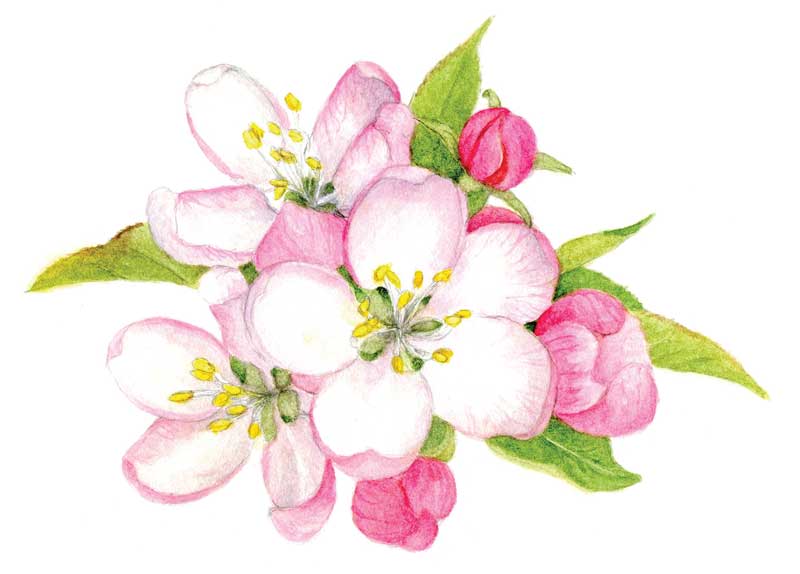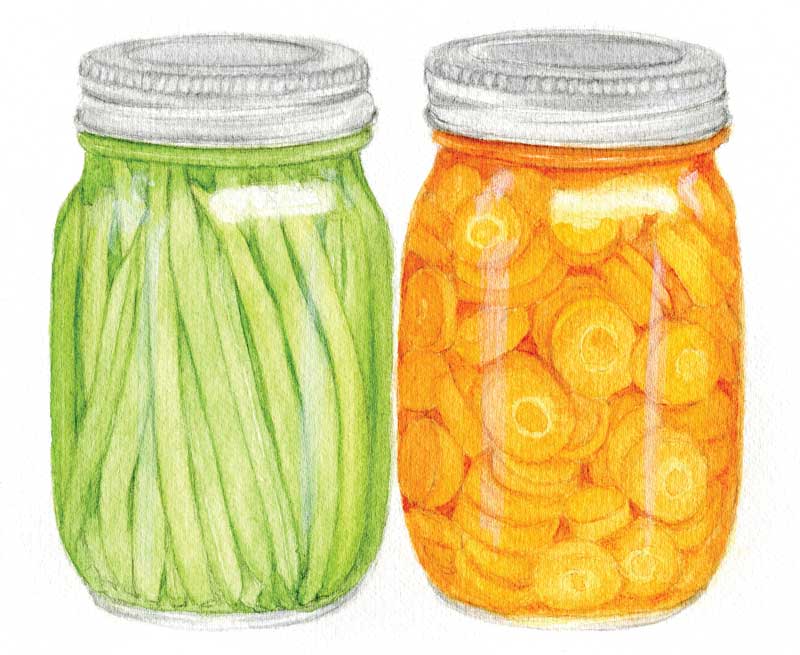And what is so rare as a day in June?
Then, if ever, come perfect days;
Then heaven tries earth, if it be in tune,
And over it softly her warm ear lays;
Whether we look, or whether we listen,
We hear life murmur or see it glisten…
—James Russell Lowell, 1819-1891
Dear Friends:
Geysers of sweet sap surging up from the roots of the red maples and American elms have fed and unfurled their tiny blossoms, soon to be pushed off by emerging seeds and leaves. You may find the carmine-red flowers of the maples and the soft, mustard-colored elm catkins fallen on the ground. The Norway maples and the lilacs are showing their green blossom clusters. Meanwhile the oaks and the ashes—as always—are far behind, still sound asleep.
The annual unfolding of the leaves starts in early May around here with the translucent green foliage of the aspens, and the leafy pageant ends with the leathery brown of oak leaves in late October. The aspens and willows are beginning to leaf out now and they look almost good enough to eat. They will be followed by the birches and maples in another week or so and then the oaks and ashes even later still. Last to leaf out among the native trees are the beeches, and rightfully so, for they hold onto their leaves the longest when summer ends. In fact, a lot of beech trees still bear the paper-pale, whispering ghosts of last year’s leaves that will not fall until the new ones push them off. From beginning to end, it can take several weeks for all of our native trees to show their leaves, one after the other.
 Illustration by Candice Hutchison
Illustration by Candice Hutchison
Field and forest report, May
Apple buds are appearing, too, signaling that pruning season is over. The orchardist has a name for each stage of the emerging blossoms. They go like this: “silver tip, green tip, quarter inch green, half inch green, mouse’s ears, tight cluster, early pink, pink, late pink, bloom, and petal-fall.” Apples vary from very early to very late so one tree might be in bloom while the one next to it is still at pink and the one next to it is at silver tip. Our ancestors in their wisdom worked with wild apples to develop varieties of fruits of many colors and flavors that came ripe over four or five months. Some had to be eaten immediately or they would turn to mush while some would keep through the whole winter hard as a rock—a beneficial partnership of many generations of people and trees.
Mountain report
Soft clouds of salamander eggs float in the vernal pool in the Wisdom Woods. On higher, rockier slopes, the curled spears of Canada Mayflower leaves are pointing up and unrolling to reveal their tiny green clusters of buds. The many-bladed circular lupine leaves are rising aloft on purple stems. Bluets and violets are in bloom in the lower meadows. Looking down from the heights, the bare woods are turning pale pink and lime green. Water trickles and chuckles down the slopes and white-throated sparrows call from the woods. Overhead, turkey vultures float silently on the warm updrafts over the south slope of Awanadjo like the disembodied spirits of peaceful meditators over at the Surry Zendo.
Rank opinion
What a delight to note every new, emerging creature of the season as it appears one by one. Soon the grand show will be happening too fast to even keep track, and we will be overwhelmed with the booming and burgeoning spring.
Critter of the month
By now, most of us have witnessed the Return of the Insects, which sounds like a B movie but happens in real life every spring when the weather gets warm. If you live in or near pine woods, you may also be seeing exotic-looking brown bugs with a shield shape and widened lower hind legs—sometimes called “leaf-legged bugs”—crawling around your house or gathered in a warm window. This bug is not the dreaded Marmorated Stink Bug (Halyomorpha halys) which is infesting houses and attacking gardens by the tens of thousands in the mid-Atlantic states. That noxious beast hasn’t overtaken Maine yet.
More likely we are seeing the Western Conifer Seed Bug (Leptoglossis occidentalis), which lays its eggs on pine needles and feeds on the young pine cones. It first arrived in Pennsylvania from out west in the 1990s and now inhabits New England states into Canada. This bug has some redeeming qualities: It walks and flies slowly, so can be easily captured and taken outside using the handy jar and postcard trick. It does not bite. It is not going to decimate our gardens or our pine forests, or so the experts say. The other good news is that all of these critters really want to get outside now, so all we need to do is help them.
 Illustration by Candice Hutchison
Illustration by Candice Hutchison
Natural events, June
Arlene Stover was an elementary school teacher, a tiny little lady, but even strapping eighth-grade boys would quiet down and shape up when they heard her little heels coming down the hallway. Arlene and George lived in an old farmhouse at the foot of Awanadjo and kept a remarkable garden there year after year. Every autumn she would put up quarts and quarts of vegetables in Mason jars. Over the years it seems that she always put up a little more than she and George could eat, or give away. When she died at age 90 there were nearly enough canned vegetables still in her cellar to feed the entire town for a week.
At certain times in June, Arlene was known for standing on her tip-toes and exulting, “It’s a beautiful blue and green day!” And she was right, for there is nothing more beautiful than the clean, new, green leaves of June set against a cloudless azure sky. Such a day awakens in us a sense of relief, a feeling of joy, and a surge of hope for the whole world. It is a day full of endless possibilities: work in the garden, a paddle on a still pond with frogs chugging and plopping, a sail across a sparkling bay with a picnic on an island and a tail wind both going out and coming back. June is the reward for January, especially when it, too, was spent in Maine.
Field and forest report
Along with buttercups, blue-eyed grass, and yellow hawkweed in the fields, the lady’s slipper, star flower, trillium, and bunchberry are in bloom in the woods. The bunchberry is our northern dogwood. Its leaves and cruciform ivory blossoms are just like dogwood farther south, but instead of a tree, it is a low ground cover.
“Bees on the Barrens” would be a great name for a fiddle tune, and that is just what we are seeing here in wild blueberry country as the hives have arrived on their northward journey with spring from the orange groves in Florida to the apple orchards and blueberry barrens in Maine and Canada. What the bees (and the beekeepers and the growers and all of us who love fresh local fruit) want are a few days of beautiful, blue and green weather so the bees can get out and work. They don’t like cool or wet or cloudy, and will stay home. Beekeeping is an increasingly difficult enterprise due to pesticides in the environment, and we are always thrilled to see the hives arrive to crown the bloom. There is no more beautiful sight on earth, in one man’s opinion, than an apple tree in full bloom being worked by clouds of bouncing, buzzing bees.
Garden report
The garden in June is a beautiful place, full of new leaves and flowers glowing with light. But it is not perfect. No sooner does a leaf appear then it is nibbled or stained or marked by something or other. No sooner does one perfect flower open to the sun then another emerges misshapen or stunted. No sooner does the devoted gardener enter the sacred precincts than he clumsily steps on some poor seedling with his size-12 boots or accidentally hacks a prized pansy with his hoe while just trying to keep the weeds down. A thunderstorm beats down the lupine and the peonies. One of the young lilac bushes suddenly wilts from top to bottom from Verticillium soon after sending up its beguiling spires of purple. Maybe the newly seeded grass doesn’t come up quite as verdant as we hoped. Maybe a skunk pocks the lawn or digs up bulbs or the deer shear off the tulips and day lilies right above the ground. Maybe some tools get left out by the absentminded and start to rust overnight. So it is with a garden.
Seedpods to carry around with you
From British horticulturalist Gertrude Jekyll: “June, the time of perfect young summer, the fulfillment of the promise of the earlier months, and with as yet no sign to remind one that its fresh young beauty will ever fade.”
From Dorothy Frances Gurney: “Kiss of the sun for pardon, song of the birds for mirth: One is closer to God’s heart in a garden than anywhere else on earth.”
That’s the Almanack for this time. But don’t take it from us—we’re no experts. Go out and see for yourself.
Yr. mst. humble & obd’nt servant,
Rob McCall.
Rob McCall splits his time between way downeast on Moose Island and Brooklin, Maine. This almanack is excerpted from his weekly radio show, which can be heard on WERU FM (89.9 FM) and streamed live via www.weru.org.






